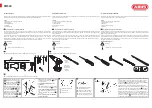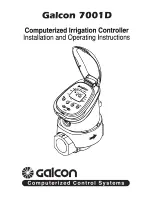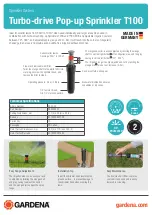
303
Thermo 230 / 231 / 300 / 301 / 350
3 Functional Description
Heaters with control unit 1572D only
Gradient evaluation
In case of low coolant flow or poor coolant circuit venting
the temperature quickly increases in heating operation.
If gradient evaluation exists, the control unit recognises
the quick temperature increase and automatically sets the
upper switching threshold to a lower value. This prevents
residual heat triggering the overheating protection.
Control idle period
A rise in temperature above the upper switching point
makes the solenoid valve in the fuel pump shut off the fuel
supply initiating the run-down. The flame extinguishes,
the combustion air fan and the circulation pump however
continue their operation. After approximately 90 seconds
(120 seconds for heaters with control unit 1572D)
run-down is completed with deactivation of the
combustion air fan.
The circulation pump remains in operation during the
control idle period. The operating indicator light is on.
3.3
Switch Off
Switching off the heater stops combustion. The operating
indicator light goes out and run-down commences. The
combustion air fan and circulation pump are deactivated
after approximately 90 to 120 seconds (120 seconds for
heaters with control unit 1572D).
Reactivation of the heater during run-down is permitted.
The burner immediately resumes operation after the
run-up time.
3.4
Power Save
With power save on the control temperatures of the
heating circuit are kept low. Combustion performance is
not reduced.
This results in a reduced heat radiation loss when limited
heating performance is required (e.g. in heat hold opera-
tion) cutting down fuel consumption.
3.5
Auxiliary Heating Operation (heaters
with control unit 1572D only)
When te61 is connected and powered (engine is
running), the heater operates in the auxiliary heating
mode.
The power save mode is during auxiliary heating
automatically deactivated by the control device.
The lower temperature threshold for reactivation of the
burner after control idle period is raised above that for
normal operation and is automatically shifted up or down
dependent on the combustion time of the heater
(hysteresis adaptation).
Hysteresis adaptation (example)
After the first control idle period, the lower operating point
is 78°C.
Combustion operation is started when the temperature
falls below this threshold.
The length of combustion time until the upper operating
point is exceeded should be 120 seconds.
If combustion lasts more than 120 seconds, the lower
operating point is increased by 1 Kelvin, up to max. 80°C.
If combustion time is less than 120 seconds, the lower
operating point is lowered by 1 Kelvin, down to minimally
70°C.
3.6
Heater Lockout (heaters with control
unit 1572D only)
After the heater has performed eight start attempts due to
a malfunction or after five subsequent flame-outs the
heater enters a lockout and start attempts are suspended.
This lockout is superior to the normal error lockout.
Unlocking is performed by starting the heater and
disconnection of the main power supply of the heater
during error run-down.
3.7
Switch-off upon Failure (heaters with
control unit 1572)
The heater switches off automatically when detecting one
of the following malfunctions.
The operating indicator light goes off. Combustion air fan
and circulation pump are deactivated after approximately
90 to 120 seconds.
Malfunctions during switch-on
–
short or open circuit of temperature sensor.
–
short or open circuit of flame sensor.
–
open circuit of solenoid valve.
Malfunctions during start-up:
–
flame detected by photo control circuit prior to high
voltage igniter spark.
–
no flame detected after approximately 25 seconds
after heater start.
Malfunctions during heating operation:
–
low voltage threshold of approximately 20V violated
for a duration of 12 seconds.
–
no combustion for more than 10 seconds.
Содержание spheros thermo 230
Страница 70: ...memos...
















































